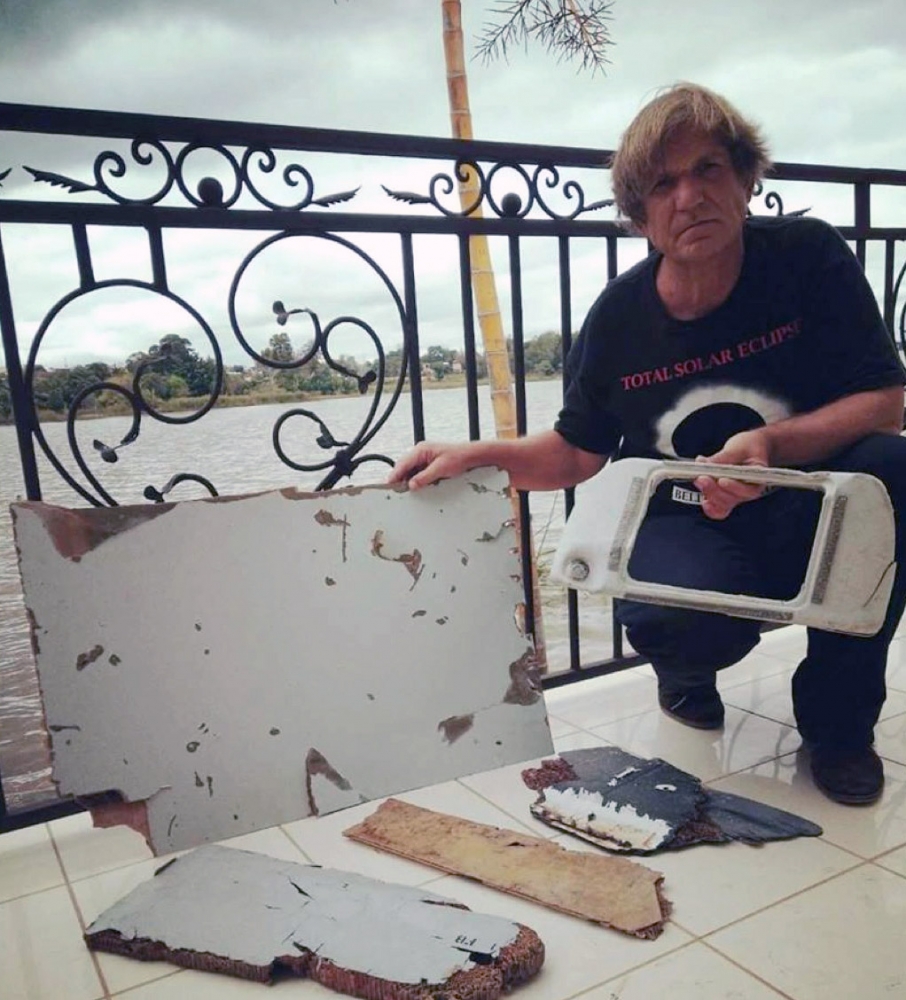MH370 sleuth says media reports are wrong on debris
01 August, 2016
4 min read
By joining our newsletter, you agree to our Privacy Policy


American lawyer and MH370 sleuth Blaine Gibson, who has recovered 10 pieces of debris from the doomed jet, has questioned some reports about the nature of debris that has been recovered.
Mr Gibson told Airlineratings.com from Seattle that the Sixty Minute program that aired on Sunday in Australia had errors of fact relating to debris being found from inside the Boeing 777.
"One of their experts claimed that no debris had been recovered from the interior cabin of MH 370, and that “fact” therefore supported the controlled glide intact ditching pilot suicide theory.”
“The fact is that pieces of MH 370 cabin debris have been recovered,” said Mr Gibson. He added that “one cabin piece was recovered on Rodrigues Island and confirmed by Australian Transport Safety Bureau and Malaysia to be "almost certainly" from MH 370.”
“I found at least two pieces of cabin debris in Madagascar... a TV monitor casing and part of an interior wall,” said Mr Gibson.
On the 60 Minute program well respected former Canadian crash investigator Larry Vance said that the lack of floating debris meant that the aircraft had made a controlled landing onto the sea. This scenario impacts where MH370 might be located.
However the initial search for MH370 did not look in the suspected crash area for almost 8 days after MH370 disappeared and the weather at the time, with 5m swells, would have broken up the debris trail in a matter of hours.
Last week the ATSB revealed to AirlineRatings.com that satellite analysis showed that the Boeing 777 was plummeting at up to 20,000ft a minute just before it impacted the ocean.
A spokesman for 60 Minutes said that off camera “Mr Vance did acknowledge…that he knew about the few pieces of debris that are suspected of being from the MH370 interior.”
The program also highlights that it has "been swamped with responses from scientists and other experts who agree that the current explanation of a high speed crash into the ocean does not fit with the evidence."
However it is the condition of the pieces from inside the cabin that Mr Blaine says shows that it is likely the Boeing 777 was pulverised in a high impact scenario.
“All the pieces I have found are small, demonstrating the plane and the cabin shattered on impact,” said Mr Gibson. “Other private citizens have found about ten pieces of floating debris, one of which is confirmed to be from the 370 cabin.”
“The fact that twenty pieces of debris have washed ashore in the southwest Indian Ocean, and none in Australia or Tanzania, prove the plane crashed north of 39 ° S,. The debris evidence points to a high speed forceful impact that shattered the plane.”
The ATSB is sticking with the current search area based on satellite data and say the uncontrolled ditching is still the hypothesis that bests fits the few available facts .
These include an analysis of frequency differences that indicated the aircraft was descending between 1800m per minute and 3000m per minute during its final log-on request to a geostationary satellite over the Indian Ocean and at up to 6700m per minute eight seconds later when it receives an acknowledgment from ground station in Perth.
Another piece of key evidence is sitting in the ATSB laboratories in Canberra. Failure analysts are looking a large piece of the aircraft’s right main wing flap to see if it was extended on impact.
If this proves not to be the case, it will serious blow to the controlled landing theory.
Next Article
Qantas triples profit but misses mark

Get the latest news and updates straight to your inbox
No spam, no hassle, no fuss, just airline news direct to you.
By joining our newsletter, you agree to our Privacy Policy
Find us on social media
Comments
No comments yet, be the first to write one.

